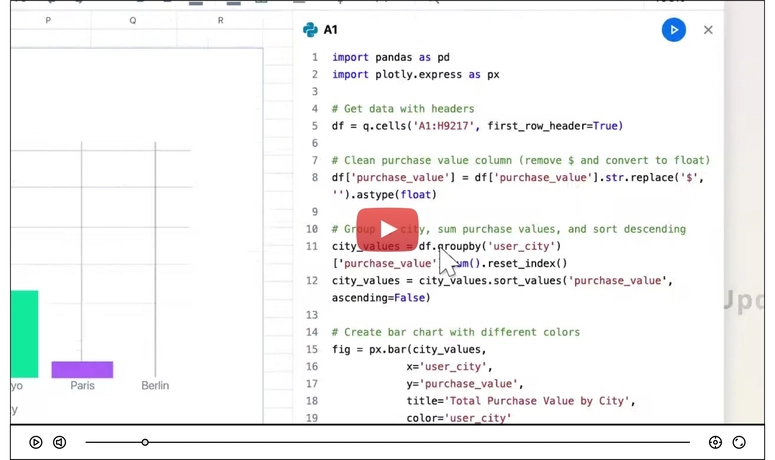Gone are the days when data scientists worked in isolation, sharing results through static notebooks or lengthy email chains. Today's data science is increasingly collaborative and real-time, thanks to modern containerization and infrastructure tools. Let's explore how teams are leveraging shared containers for better collaborative science.
The Old Way vs. The New Way
Previously:
Data Scientist A -> Works on local machine -> Pushes to Git -> Data Scientist B pulls -> Runs locally -> Conflicts!
Now:
Data Scientist A + B -> Shared Container -> Real-time collaboration -> Instant feedback -> Better results!
Why This Matters
-
Identical Environments
- No more "works on my machine" problems
- Same package versions
- Same computational resources
- Shared data access
-
Resource Efficiency
- Share GPU/CPU resources
- No duplicate data copies
- Reduced cloud costs
- Better resource utilization
Setting Up a Collaborative Environment
Here's a quick way to set up a shared Jupyter environment using Docker and Terraform:
# main.tf
resource "docker_container" "jupyter_collaborative" {
name = "data_science_workspace"
image = "jupyter/datascience-notebook:latest"
ports {
internal = 8888
external = 8888
}
volumes {
container_path = "/home/jovyan/work"
volume_name = docker_volume.shared_data.name
}
# Enable multi-user access
command = [
"start-notebook.sh",
"--NotebookApp.token=''",
"--NotebookApp.password=''",
"--NotebookApp.allow_remote_access=true",
"--NotebookApp.allow_root=true"
]
}
resource "docker_volume" "shared_data" {
name = "collaborative_data"
}
Real-world Example
Let's say you're working on a machine learning model. Here's how real-time collaboration looks:
# shared_workspace.ipynb
# Data Scientist A starts working
def preprocess_data(df):
# Initial preprocessing
df = df.dropna()
return df
# Data Scientist B jumps in real-time to add feature engineering
def add_features(df):
df['new_feature'] = df['existing_feature'].rolling(7).mean()
return df
# Both can see changes and iterate together
model = RandomForestClassifier()
model.fit(X_train, y_train)
Monitoring Collaborative Sessions
Here's a simple Python script to monitor who's working in your shared container:
import psutil
import datetime
def get_active_users():
users = psutil.users()
print(f"Active users at {datetime.datetime.now()}:")
for user in users:
print(f"- {user.name} (terminal: {user.terminal})")
Best Practices for Shared Environments
- Resource Management
# Set memory limits for your work
import resource
resource.setrlimit(resource.RLIMIT_AS, (1024 * 1024 * 1024, -1)) # 1GB limit
- Coordination
# Use file locks for shared resources
from filelock import FileLock
with FileLock("shared_model.lock"):
model.fit(X_train, y_train)
- Version Control (Even in Real-time)
# Add cell metadata for attribution
%%cell_magic
# Author: Data Scientist A
# Last Modified: 2024-01-29
Benefits We've Seen
-
Faster Iteration Cycles
- Immediate feedback on model changes
- Quick validation of approaches
- Real-time debugging sessions
-
Knowledge Transfer
- Junior data scientists learn by watching seniors
- Real-time code reviews
- Shared best practices
-
Better Resource Utilization
- Shared GPU access
- Optimized cloud spending
- No redundant computations
Getting Started
- Set up your shared container:
terraform init
terraform apply
- Connect multiple users:
ssh -L 8888:localhost:8888 user@shared-container
- Start collaborating:
- Open Jupyter at
localhost:8888 - Share the URL with your team
- Begin real-time collaboration
- Open Jupyter at
Challenges and Solutions
-
Resource Contention
- Use resource quotas
- Implement fair scheduling
- Monitor usage patterns
-
Version Control
- Use Git integration in Jupyter
- Maintain clear cell metadata
- Regular checkpoints
-
Security
- Implement proper authentication
- Use HTTPS/SSL
- Regular security audits
Conclusion
Real-time collaborative data science through shared containers isn't just a trend—it's a more efficient way to work. Teams can iterate faster, learn from each other, and make better use of resources. The initial setup might take some effort, but the benefits in terms of productivity and knowledge sharing are well worth it.
Have you tried real-time collaborative data science? What tools and practices work best for your team? Share your experiences in the comments!
Note: Remember to always follow security best practices when setting up shared environments. The examples above are simplified for demonstration purposes.
*At Keybyte Systems we provide full service towards setting up a configurable lightweight setup for collaborative work with containers. Feel free to contact me to discuss your situation , no matter where you are located. *





Top comments (0)